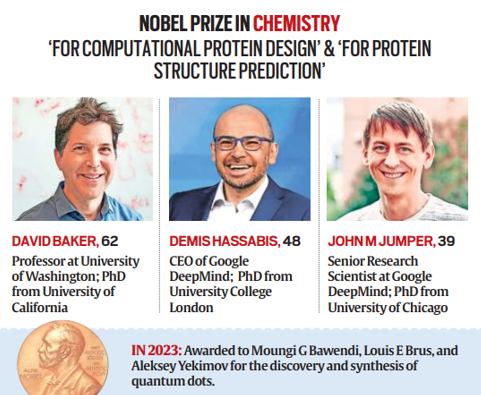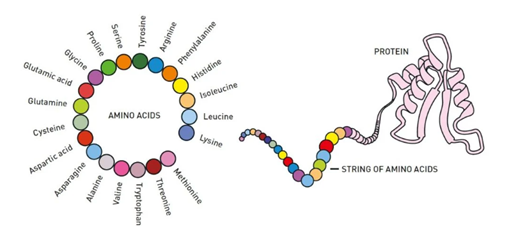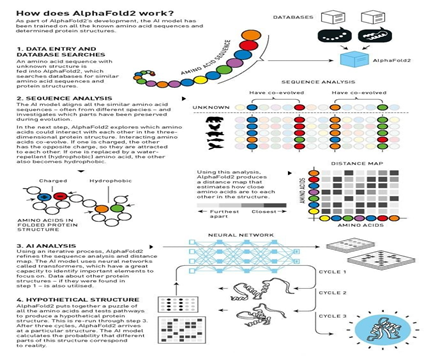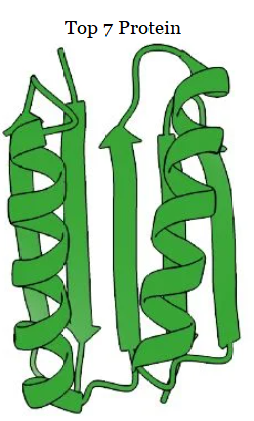TAG: GS-3: SCIENCE AND TECHNOLOGY & MISCELLANEOUS
THE CONTEXT:
The Nobel Prizes for 2024 in Chemistry were awarded to David Baker “for computational protein design” and Demis Hassabis and John M. Jumper “for protein structure prediction.”
EXPLANATION:
Importance of Proteins in Life
- These discoveries are reshaping our understanding of them. The ability to design new proteins and predict their structures opens possibilities, from medical breakthroughs to tackling global environmental challenges. As we unlock more secrets of these molecular machines, the potential benefits for humankind are immense.
- Proteins are fundamental to all living organisms, playing a crucial role in nearly every biological process.
- They are large and complex molecules composed of long chains of amino acids, responsible for functions such as speeding up biochemical reactions (enzymes), providing structural support, storing energy, and aiding immune responses. Life itself would be impossible without proteins.
Breakthrough in Protein Research

- Their contribution differs from traditional discoveries, as they developed tools that significantly accelerate the process of determining protein structures and creating new proteins.
- These breakthroughs were achieved using artificial intelligence (AI) and computational tools, making structural prediction and protein synthesis far easier and more precise.
How does a protein find its unique structure?
- Proteins – They are fundamental to almost all biological processes and are built from 20 amino acids joined into long strings.
Haemoglobin is a protein that transports oxygen and insulin helps absorption of glucose from blood.
- Protein Structure – The string of amino acids twists and folds into a distinct three-dimensional structure which gives proteins their function.
- All the information about how the protein folds is present in the amino acid sequence.

- Anything that impacts protein production can have consequences for human health.
- Enzymes – Certain kinds of proteins, called enzymes, can speed up biochemical reactions within the body, while others can provide structural support to cells and tissues.
- Then there are some proteins that help in immune response, while others can store nutrients or energy.
- Decoding Proteins – Traditional methods of decoding the structure of proteins, through x-ray crystallography, is a laborious and time-consuming process taking months/years.
- Database – Over the years, the structures of thousands of proteins have been catalogued and a database containing all known sequences of amino acids has also been created.
What are AlphaFold and Rosetta?
- AlphaFold – It is an artificial intelligence model that could predict the structures of millions of proteins.
- Hassabis and Jumper received the other half of the prize for developing this model.
- Use of AI – AlphaFold was upgraded using AI neural networks called transformers.
- AI neural networks can find patterns in enormous amounts of data in a more flexible manner.
- AlphaFold2 was trained on the vast information in the databases of all known protein structures and amino acid sequences.
- The AI tool predicts the structures of proteins using known sequences of amino acids from the database.
- These predictions were then matched to catalogued protein structures in the other database.
- Accuracy – The AI model is not perfect, but it estimates the correctness of the structure it has produced, so researchers know the reliability of their prediction.

- Rosetta – It is the software developed by David Baker to predict protein structures by entering the amino acid sequences as input.
- Creating New Protein Structure – The Rosetta process is reversed to get the amino acid sequence for the desired protein structure, which enabled to create entirely new proteins.
- The new proteins can perform functions that naturally-synthesised proteins are not designed to.
- Top 7 – It was the first protein constructed by Rosetta that was entirely different to all known existing proteins.

Creating New Proteins
- David Baker utilized computational methods to design synthetic proteins not found in nature.
- These new proteins can perform functions that natural proteins cannot, such as breaking down non-biodegradable plastics.
- Baker’s method offers an efficient alternative to evolutionary approaches, which are time-consuming and require numerous mutations.
- This opens up exciting possibilities in areas like environmental protection and medical research.
Implications and Future Prospects
- The work of these scientists has far-reaching implications, particularly in drug discovery and treating diseases caused by protein malfunctions.
- The application of AI in chemistry and biology is becoming a critical area of research, and the Nobel Prize recognition highlights the transformative potential of such technological advancements.
What are the significances of this invention?
- Better Understanding of Protein– Their work enabled the better visualisation of protein structure and creating new proteins based on our requirements.
- AlphaFold2 has calculated the structure of all human proteins and predicted the structure of virtually all the 200 million proteins that researchers have so far discovered when mapping Earth’s organisms.
- Time Saving– Calculating the protein structure took years once and now takes just a few minutes.
- Better Understanding of Life– It allows us to better understand how life functions.
- Clarity on Diseases– Knowing the relation between protein structure and amino acids , helped in understating some diseases.
- Understanding Antibiotic Resistance– Understanding the bacterial enzymes that cause antibiotic resistance will help in discovering ways to prevent it.
- Plastic Decompostion – Synthetic enzymes and proteins that can decompose plastic can be designed using this tool.
- Development of Bioproducts– The ability to create proteins can lead to new nanomaterials, targeted pharmaceuticals, more rapid development of vaccines, minimal sensors and a greener chemical industry.
SOURCE:
Spread the Word
